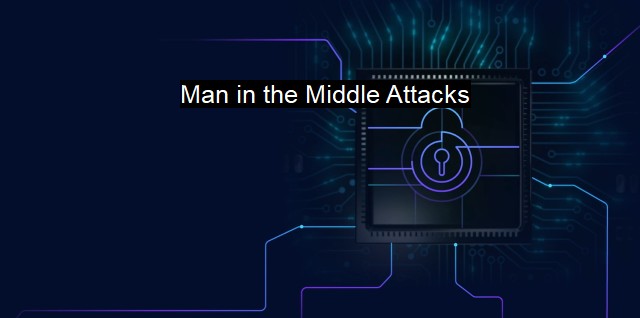What are Man in the Middle Attacks?
Understanding and Preventing Man in The Middle (MitM) Attacks through Antivirus Software
Man in the Middle (MitM) attacks pose significant threats to the confidentiality and security of computer networks. They provide a access point for hackers to intercept, record, and perhaps modify communication between two unsuspecting targets. This stealthy form of cybercrime uses intrusive techniques to intervene in communications, steal sensitive data, or distribute malware.a "Man in the Middle" attack is a method where offensive hackers insert themselves between the interaction of two parties. This can be accomplished in a variety of ways, most commonly through unprotected Wi-Fi networks, manipulated IP configurations, or deceptive email phishing strategies. The objective? To eavesdrop on the communication between the two ends of the transmission. In more malicious strategies, the attackers may break the connection entirely, altering the content or directing targets to malicious websites.
MitM attacks occur silently, without the immediate knowledge of the victims, with the attackers seeking opportunities to deceive their targets - acting as gatekeepers between the user and the intended server. a hacker may exploit vulnerabilities in public Wi-Fi networks, exposing individuals to the theft of financial details, personal information, confidential work-related documents, and other sensitive information. The data can be sold in dark web markets or used to further exploit victims via subsequent cyberattacks, such as ransomware or identity theft.
To better understand the harm of a Man in the Middle attack, consider a digital conversation held between two individuals– let's say, Alice and Bob. The communication begins: Alice sends a message to Bob; unbeknownst to both, a Man in the Middle (Cybercriminal Charlie), intercepts the message. Charlie now holds full control over the communication panel. Depending upon Charlie's intent, he can choose to merely listen in without changing anything or modify Alice's original message before it reaches Bob, leveraging this stolen information for malicious intent. Thus, making a big blunder hazardous to personal privacy and security.
To combat these potential risks, the cybersecurity community constantly develops new defenses. Using robust security infrastructures like Secure Sockets Layer (SSL) or Transport Layer Security (TLS) for encrypted communications makes it difficult, although not impossible, for a hacker to instigate a MitM attack. Regular updates can patch security vulnerabilities, reducing opportunities for exploitation. Incorporating Virtual Private Networks (VPNs) enables safe online browsing, especially over public networks.
A proactive approach to personal cybersecurity is key; individuals should keep their operating systems and apps updated, avoid suspicious or unknown Wi-Fi networks, and double-check website URLs for consistency. Those worried about phishing efforts can invest in protective software or services, strengthening their defenses by identifying dubious emails or websites.
Antivirus software is a critical tool defending against MitM and various other attacks. Reliable antivirus software scans downloads for malicious content, warns users about insecure webpages, and prevents unauthorized access to a user's machine. Regular use of such software, paired with updating to the latest version, can provide comprehensive protection against various-formed cyberattacks.
Man in the Middle attacks represents a serious threat to individual and enterprise security. With innovative methods employed by cybercriminals, organizations and individuals must always ensure to keep their defenses up-to-date. Having a robust security infrastructure and incorporating secure practices in the digital communication regime can deter infiltration efforts by a malignant MitM attacker. Professionally designed antivirus software and awareness of suspicious online behavior are currently the best defenses. the evolution of these attacks creates a perpetual need for security development, thus maintaining an ongoing challenge in the field of cybersecurity.

Man in the Middle Attacks FAQs
What is a man-in-the-middle attack (MITM)?
A man-in-the-middle (MITM) attack is a type of cybersecurity attack where an attacker intercepts communication between two parties without their knowledge. The attacker can then eavesdrop or alter the communication without either party knowing.How does a man-in-the-middle attack work?
A man-in-the-middle attack works by intercepting the communication between two parties, often by infiltrating an insecure network connection or compromising a network device. The attacker then captures the traffic and can either eavesdrop on the conversation or modify the messages. This type of attack is particularly dangerous because the victims may be unaware that their communication has been intercepted.What are some common signs of a man-in-the-middle attack?
Some common signs of a man-in-the-middle attack include unexpected pop-ups, changes in website behavior, changes in website certificates, or slow internet speeds. Additionally, if you notice any strange activity on your accounts, such as logins from unfamiliar locations or changes to your passwords or security settings, you may be the victim of a man-in-the-middle attack.How can I protect myself against a man-in-the-middle attack?
To protect yourself against a man-in-the-middle attack, it is important to use secure connections, such as HTTPS or SSL, whenever possible. Additionally, avoid using public Wi-Fi networks or unsecured networks whenever possible. Finally, use a reliable antivirus software that can detect and prevent attacks before they occur.| | A | | | B | | | C | | | D | | | E | | | F | | | G | | | H | | | I | | | J | | | K | | | L | | | M | |
| | N | | | O | | | P | | | Q | | | R | | | S | | | T | | | U | | | V | | | W | | | X | | | Y | | | Z | |
| | 1 | | | 2 | | | 3 | | | 4 | | | 7 | | | 8 | | |||||||